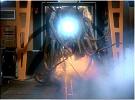Your right about that. The German had to go for tanks that were better then what other nations had they never had the fuel to support the number of tank that the US and soviets could.Originally posted by JJU57:
It's one thing to discuss the technical merits or battlefield merits of each. But to assume that if the Germans produced a T-34 or Sherman the result might be different is crazy. It didn't matter what tank the Germans produced. The problem wasn't with the tank but with the number of factories and availability of raw resources.
Would 10,000 extra T-34 mattered if there was no ammo or fuel for them? Remember the Germans lacked many raw goods and never could produce enough ball bearings to meet their needs.
Finally, it wasn't till '43 that they actually went into full wartime production.
What they should have did late in the war is produced the panther and the jagpanther. They were two very good weapons that worked will togethere becouse of their speed and armor.



 Of course the better tank is going to be harder to make, it shouldn't be penalized for that.
Of course the better tank is going to be harder to make, it shouldn't be penalized for that. This story has really nothing to do with it but as you begun talking current use/existance of T-34..you may find this interesting:
This story has really nothing to do with it but as you begun talking current use/existance of T-34..you may find this interesting: